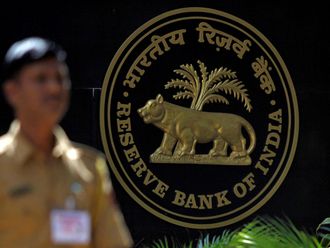
New York
Investors are fleeing the US junk debt market as a sell-off that started in low-rated energy bonds last month has now spread to the broad corporate debt market amid fears of a spike in default rates.
The sharp drop in energy bond prices has helped push average yields on broad junk debt near the 7 per cent mark for the first time since June 2013, according to Barclays indices. The jump in yields comes as redemptions from mutual funds and ETFs buying the securities more than doubled in the past week, to $1.9 billion, according to Lipper.
Reversals in junk bonds often sway sentiment in other corners of the market, including equities and higher quality corporate debt, and have the potential to starve some companies of a source of credit.
The sell-off has cast a shadow on the outlook for the $1.4 trillion market of weaker credit quality corporate debt, highlighting the risks to investors who flocked to the bonds in recent years.
“The junk bond market is having a hard time and the pressure will continue,” said Michael Kastner, managing principal at Halyard Asset Management. “There are no real buyers right now and mutual funds will keep seeing redemptions.”
Investors in the investment-grade space, where companies with stronger balance-sheets sell their debt, have also expressed nervousness over contagion from the junk bond sell-off, as well as concerns over their ability to sell the debt in a one-way market.
Bankers, traders and regulators are concerned that strong buying over the past five years may be masking so-called “liquidity” issues in the vast corporate bond market that could come back to haunt them during a big sell-off.
The spread on Barclays US investment-grade corporate index has risen to 130 basis points, far surpassing its low of 97 bps reached in July this year and indicating weakness in the market.
Big funds are particularly fearful that a reversal in the junk bond market could be faster in this cycle than previously. While issuance has boomed, there are fewer big banks and those that exist have pared back their securities portfolios, meaning they have less capacity to buy bonds and support the market in a crisis.
“With fewer dealers and banks supporting these bonds, the swing in prices could become more dramatic,” said Adrian Miller, director of fixed income strategy at GMP Securities.
The pressure on junk-rated energy bonds has raised fears of an increase in default rates and restructurings should oil prices slide further. At $62 a barrel, Brent crude prices are now 51 per cent below their post-financial crisis high.
Energy companies have issued a large amount of debt in recent years, with the energy sector now accounting for about 16 per cent of the junk bond market, up from a share of 4 per cent a decade ago.
The bulk of high-yield energy debt does not reach maturity until 2017, when about $13.7 billion worth of bonds are due, according to Fitch. The rating agency projects a 1 per cent or below energy default rate in 2015.
— Financial Times












